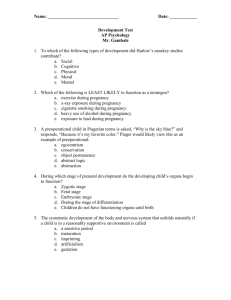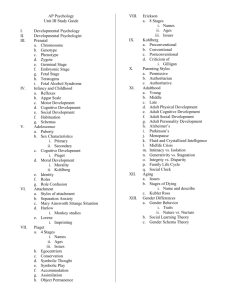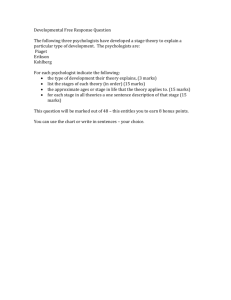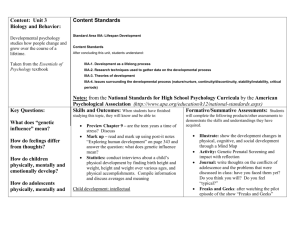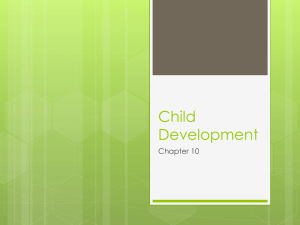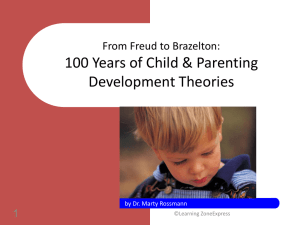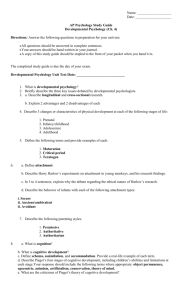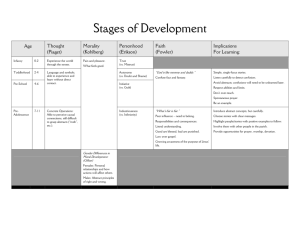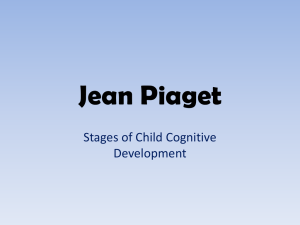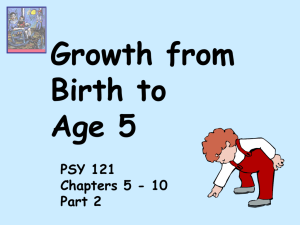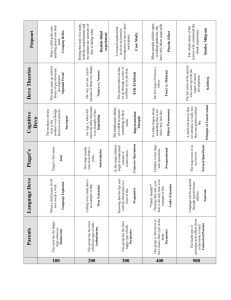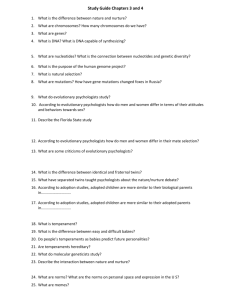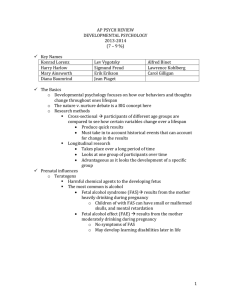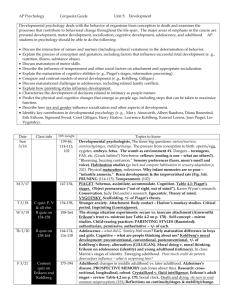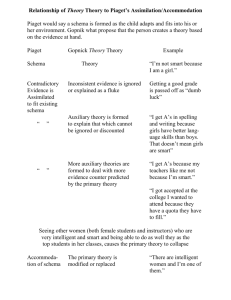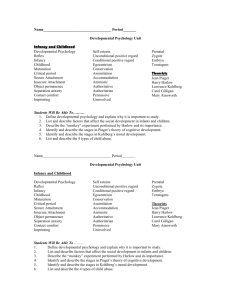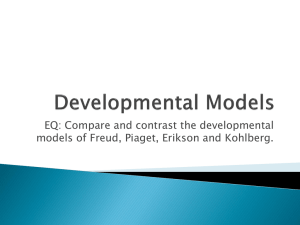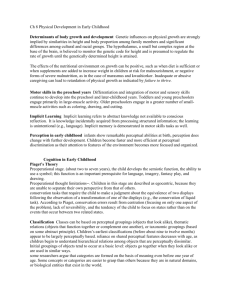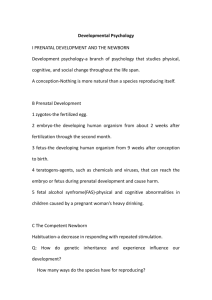Developmental Psychology Review Sheet
advertisement
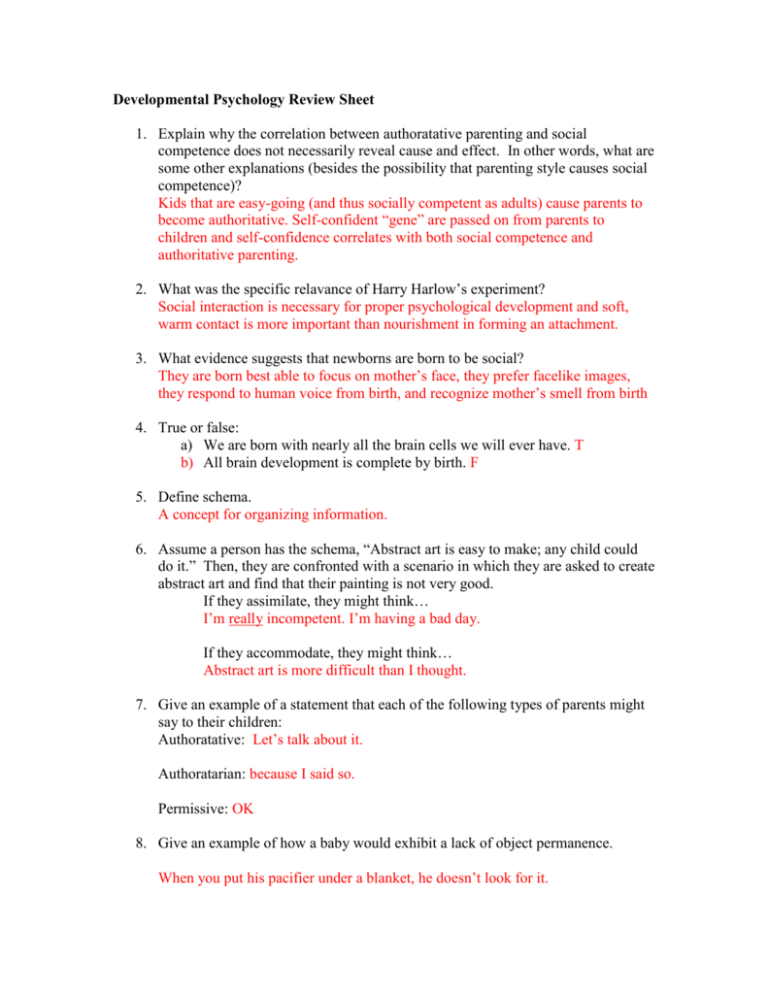
Developmental Psychology Review Sheet 1. Explain why the correlation between authoratative parenting and social competence does not necessarily reveal cause and effect. In other words, what are some other explanations (besides the possibility that parenting style causes social competence)? Kids that are easy-going (and thus socially competent as adults) cause parents to become authoritative. Self-confident “gene” are passed on from parents to children and self-confidence correlates with both social competence and authoritative parenting. 2. What was the specific relavance of Harry Harlow’s experiment? Social interaction is necessary for proper psychological development and soft, warm contact is more important than nourishment in forming an attachment. 3. What evidence suggests that newborns are born to be social? They are born best able to focus on mother’s face, they prefer facelike images, they respond to human voice from birth, and recognize mother’s smell from birth 4. True or false: a) We are born with nearly all the brain cells we will ever have. T b) All brain development is complete by birth. F 5. Define schema. A concept for organizing information. 6. Assume a person has the schema, “Abstract art is easy to make; any child could do it.” Then, they are confronted with a scenario in which they are asked to create abstract art and find that their painting is not very good. If they assimilate, they might think… I’m really incompetent. I’m having a bad day. If they accommodate, they might think… Abstract art is more difficult than I thought. 7. Give an example of a statement that each of the following types of parents might say to their children: Authoratative: Let’s talk about it. Authoratarian: because I said so. Permissive: OK 8. Give an example of how a baby would exhibit a lack of object permanence. When you put his pacifier under a blanket, he doesn’t look for it. 9. How would a baby exhibit a self-concept? He touches his nose when you put a mark on it and put him in front of a mirror. 10. Into which stage of Piaget’s developmental theory do each of the following fit: a) A child saying “that’s my star in the sky!” preoperational (he is egocentric but can talk) b) A child getting anxious if someone other than their parent holds them. Sensorimotor (this is stranger anxiety) c) The ability to do a liquid conservation test. Concrete operational OR formal operational d) The ability to pretend. At least preoperational, but they can continue still do this in concrete and formal e) The ability to add, subtract, and do multiplication tables. At least concrete operational 11. In what stage of moral development would the following comment be indicative: Can I “buy” their way into heaven by giving money to a church? Preconventional 12. What type of development did each of the stage theorists that we discussed focus on? a) Erikson: social b) Kohlberg: moral c) Piaget: cognitive 13. According to these three theorists, at what stages of development would a three year old be? Initiative v. guilt; preconventional, preoperational 14. According to these three theorists, at what stage of development would a fourteen year old be? Identity v. role confusion, post-conventional (maybe), and formal operational (probably) Study Guide Checklist Rooting reflex Newborn’s senses Schema, accomodation, assimilation Piaget’s stages Attachment (Harlow’s monkeys, Ainsworth study, deprivation and disruption) Childrearing styles (authoratarian, authoratative, permissive) Moral development (Kohlberg) Criticisms of Kohlberg’s theory Erikson’s stages of psychosocial development (focus on trust vs. mistrust, identity formation vs. role confusion, intimacy vs. isolation, and integrity vs. despair)
